Dr. Anthony Fauci, the former director of the National Institute of Allergy and Infectious Diseases (NIAID), has been a central figure in the global response to the COVID-19 pandemic. His actions, decisions, and policies have been subject to intense scrutiny, particularly during a recent hearing that exposed several contentious aspects of his leadership. This article presents a detailed and fact-based analysis of the key issues discussed during the hearing, highlighting potential misconduct, inconsistencies, and the broader implications of Fauci’s decisions on public health.
The Lab Leak Theory: Suppression and Controversies
Emails and Communications
In the early days of the pandemic, concerns about the origins of SARS-CoV-2 were prominent. On January 31, 2020, Dr. Christian Anderson and Dr. Eddie Holmes expressed concerns via email to Dr. Fauci, suggesting that the virus appeared engineered. The very next day, a conference call was organized involving Dr. Fauci, Dr. Jeremy Farrar, and other experts to discuss these concerns. Remarkably, within just three days, Anderson and Holmes reversed their stance, supporting a natural origin theory.
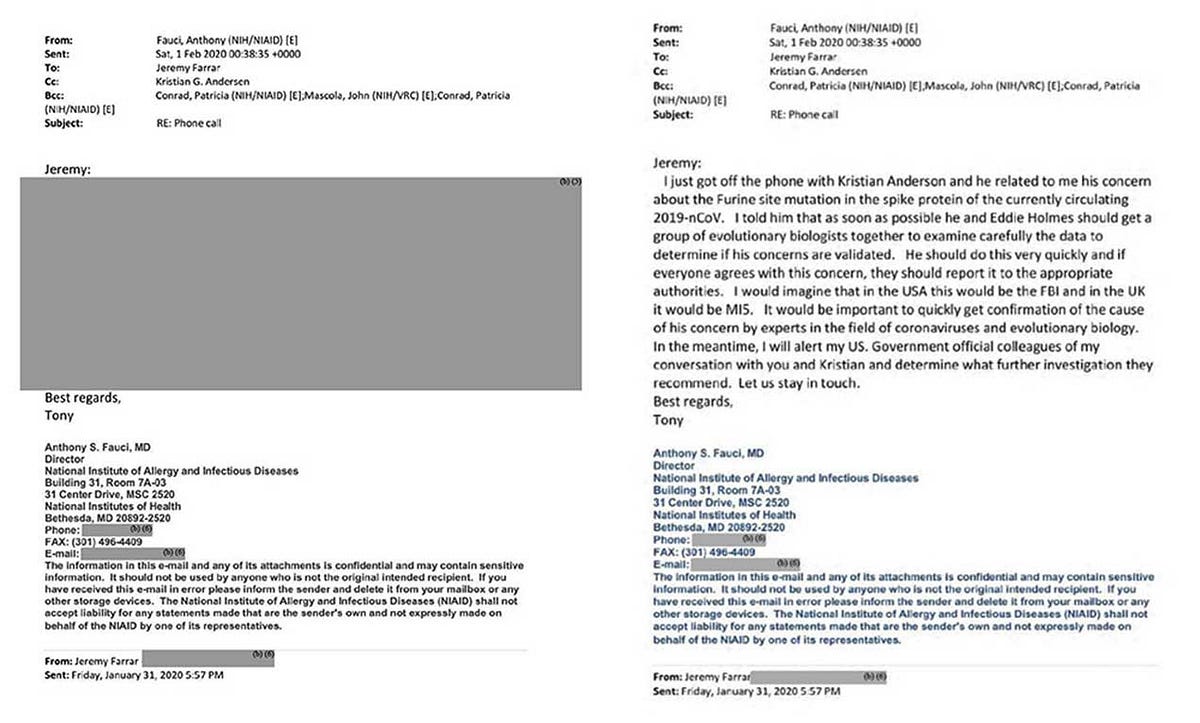
Fauci denied any efforts to suppress the lab leak theory, yet the rapid reversal and the subsequent public promotion of the natural origin theory raised questions about scientific integrity and possible external influences. This suspicion was further fueled by revelations that Meta executives, including Mark Zuckerberg, were pressured by the White House to downplay the lab leak theory on Facebook, resulting in the removal of posts discussing it.
The significant turnaround in the views of Anderson and Holmes raises serious questions about the transparency and independence of the scientific process. Within a mere three days, these respected scientists shifted from considering the virus potentially engineered to supporting a natural origin theory, aligning with the official stance promoted by Fauci. This rapid shift, coinciding with high-level discussions and communications involving Fauci, suggests that external pressures may have influenced the scientific discourse, undermining public trust in the integrity of scientific research.
Further complicating the matter is the revelation that social media platforms, particularly Facebook, were influenced by the White House to suppress discussions about the lab leak theory. Emails released during the hearing indicated that Zuckerberg and other executives were pressured to downplay this theory, leading to the removal of posts and censorship of information. This collusion between government officials and private corporations to control the narrative about the virus’s origins represents a dangerous precedent, highlighting the need for greater transparency and accountability in both governmental and corporate actions.
The “Proximal Origin” Paper
The “Proximal Origin” paper, which concluded that SARS-CoV-2 was not a laboratory construct, became a cornerstone of the natural origin narrative. Fauci cited this paper from the White House podium in April 2020. Despite receiving drafts of the paper, Fauci denied editing it, a claim that seemed dubious given the tight timeline and the pressure to counter the lab leak theory. The involvement of high-level public health officials in shaping the scientific discourse further undermined trust in the process.
The timing and circumstances surrounding the “Proximal Origin” paper’s publication have raised significant ethical and scientific concerns. The paper’s rapid acceptance and promotion, especially given the initial skepticism expressed by its authors, suggest a coordinated effort to steer the scientific community and the public away from considering the lab leak hypothesis. This effort was not merely academic but involved strategic communications from high-level officials, including Fauci, to promote a particular narrative. Such actions, if proven, would represent a serious breach of scientific ethics, where the pursuit of a predetermined conclusion overshadowed the objective analysis of available evidence.
Moreover, Fauci’s denial of any editorial role in the paper, despite his close association with its authors and the high stakes involved, appears increasingly untenable. The apparent alignment of the paper’s conclusions with the public statements and policy positions advocated by Fauci and other health officials suggests that the paper was more than a mere academic exercise. Instead, it may have been part of a broader strategy to manage public perception and policy direction during a critical phase of the pandemic. This strategy, if true, undermines the foundational principles of scientific inquiry and transparency, eroding public trust in health authorities.
Ethical Concerns and Conflicts of Interest
Dr. David Morens’ Misconduct
Dr. David Morens, a senior advisor to Fauci, was implicated in using private emails to avoid Freedom of Information Act (FOIA) requests, a tactic that raises serious ethical concerns. Morens also assisted Dr. Peter Daszak of EcoHealth Alliance in evading scrutiny. Fauci claimed ignorance of these actions, despite being copied on numerous emails. This ignorance or possible negligence suggests a troubling lack of oversight or an intentional effort to shield questionable practices from public view.
Morens’ actions, as revealed through the emails, indicate a deliberate effort to circumvent transparency and accountability mechanisms. By using private emails, he effectively insulated key communications from public scrutiny, thereby undermining the principles of open government and accountability. This behavior is particularly concerning given the context of ongoing debates and investigations into the origins of COVID-19 and the role of funded research in potentially contributing to the pandemic. The use of private communications to manage sensitive and potentially controversial information raises red flags about the integrity of the involved officials and the processes they oversee.
Additionally, Morens’ close collaboration with Peter Daszak, a central figure in the debate over gain-of-function research and the funding of the Wuhan Institute of Virology, highlights a conflict of interest that demands thorough investigation. The attempts to protect Daszak and EcoHealth from scrutiny, as documented in the emails, suggest that key officials may have prioritized institutional and personal interests over public accountability and scientific transparency. This situation underscores the urgent need for robust oversight and independent investigations to ensure that public health policies and research funding decisions are made in the best interest of global health, free from undue influence and conflicts of interest.
EcoHealth Alliance and Gain-of-Function Research
NIH funding for EcoHealth Alliance, which included sub-awards to the Wuhan Institute of Virology, was another point of contention. The research involved studying bat coronaviruses and potentially included gain-of-function experiments, which Fauci maintained did not meet the regulatory definition of such research. However, compliance issues with EcoHealth’s grant reporting were significant enough to warrant suspension and debarment actions. Fauci’s delayed awareness of these compliance problems reflects poorly on his oversight capabilities.
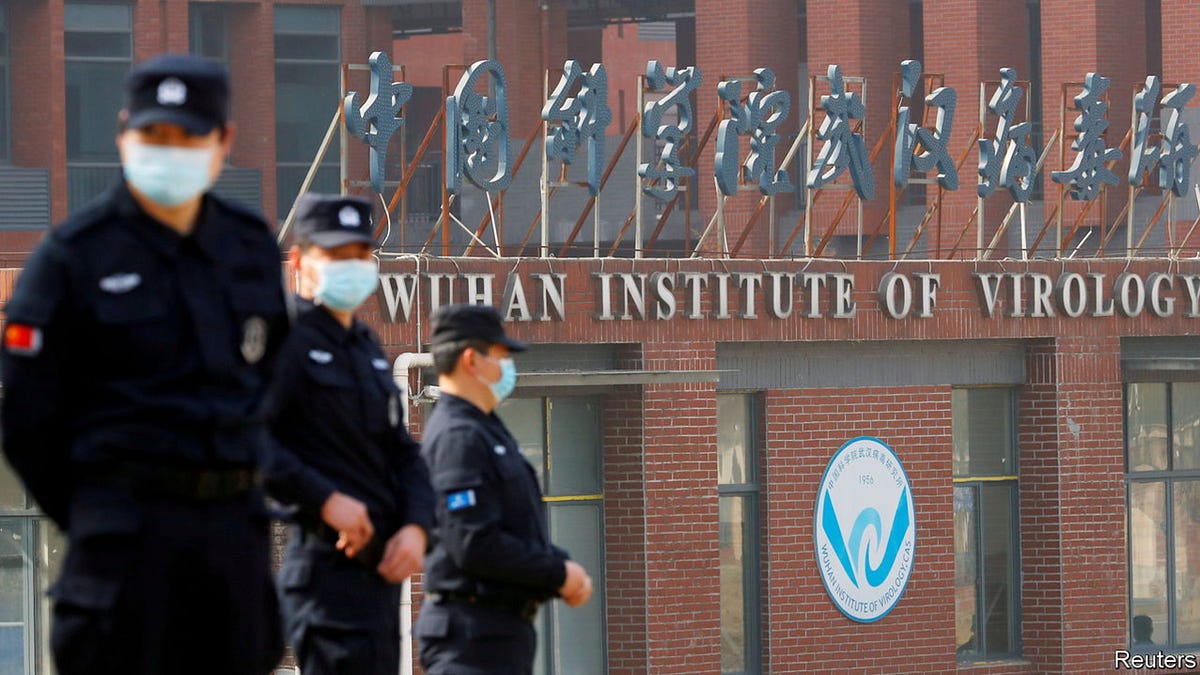
The controversy surrounding EcoHealth Alliance’s funding and research practices highlights significant gaps in oversight and accountability within the NIH and associated agencies. The lack of stringent monitoring and enforcement of compliance requirements allowed potentially risky research to proceed with inadequate safeguards. This failure is particularly egregious given the high stakes involved in studying pathogens with pandemic potential. The apparent disconnect between Fauci’s public assurances and the documented compliance issues underscores a broader systemic problem in the management of research funding and oversight.
Moreover, the debate over what constitutes gain-of-function research and the regulatory definitions applied to such studies is a critical issue that remains unresolved. Fauci’s assertion that the funded research did not meet the regulatory definition of gain-of-function has been contested by several experts, who argue that the research conducted at the Wuhan Institute of Virology did involve enhancing the transmissibility and virulence of viruses. This contention points to a need for clearer and more stringent definitions and regulations governing high-risk research to prevent similar controversies and potential public health threats in the future.
Mask Mandates and Social Distancing: Arbitrary Guidelines and Public Confusion
The Six-Foot Rule
One of the most criticized aspects of the pandemic response was the six-foot social distancing rule. Fauci admitted that this guideline “just appeared” and was not based on solid scientific evidence. The arbitrary nature of this rule contributed to public confusion and eroded trust in public health guidelines.

The six-foot social distancing guideline exemplifies the challenges and limitations of rapidly formulating public health policies during a pandemic. While the intention behind such measures was to reduce transmission and protect public health, the lack of a solid scientific basis for this specific distance led to significant public skepticism and confusion. As new evidence emerged, it became clear that transmission dynamics were more complex, involving factors such as ventilation, mask usage, and the duration of exposure. The rigid adherence to an arbitrary guideline, without continuously updating policies based on evolving scientific understanding, undermined public confidence in health authorities.
Furthermore, the inconsistencies in how these guidelines were communicated and enforced added to the confusion. Different jurisdictions implemented varying rules, sometimes conflicting with federal recommendations. This patchwork approach, combined with the initial lack of transparency about the scientific rationale behind the six-foot rule, contributed to a perception of arbitrariness and eroded trust in public health directives. Moving forward, it is essential for health authorities to clearly communicate the scientific basis for their guidelines, update them as new evidence becomes available, and ensure consistent implementation to maintain public trust and compliance.
Inconsistent Messaging on Masks
Fauci’s early communications about masks were inconsistent. An email from February 2020 stated that drugstore masks were not effective against the virus, a stark contrast to later public messaging that promoted widespread mask usage. This flip-flop in guidance weakened Fauci’s credibility and contributed to public skepticism about mask efficacy.
The initial messaging regarding mask efficacy was a significant misstep in the pandemic response. Early in the pandemic, Fauci and other health officials advised against the use of masks by the general public, citing limited evidence of their effectiveness in preventing community spread and concerns about preserving supplies for healthcare workers. However, as more evidence emerged showing the benefits of widespread mask usage in reducing transmission, public health messaging shifted to strongly recommending or mandating masks. This abrupt change, without adequately explaining the evolving understanding of the virus and the rationale for the new recommendations, led to confusion and distrust among the public.
The inconsistent messaging was further compounded by the politicization of mask usage. In some regions, mask mandates became a contentious issue, with significant public resistance fueled by mixed signals from health authorities and political leaders. To mitigate such issues in future public health crises, it is crucial for health authorities to provide clear, consistent, and evidence-based guidance, accompanied by transparent explanations of how and why recommendations may change as new data becomes available. Additionally, proactive public education campaigns can help build understanding and compliance with health measures, reducing the risk of politicization and resistance.
Vaccine Mandates: Lack of Clarity and Public Resistance
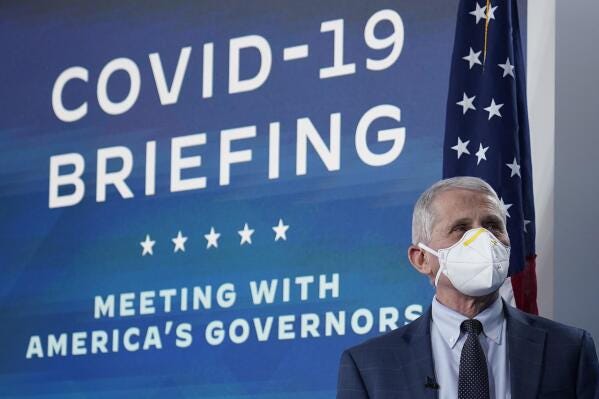
Decision-Making Process
The decision to mandate vaccines was portrayed as a collective one involving various government departments. Fauci did not personally recommend the mandates but supported the collective decision. However, his vague responses during the hearing failed to provide clear accountability, contributing to public confusion and resistance.
The vaccine mandate decision-making process exemplifies the complexities and challenges of navigating public health policy in a highly polarized environment. While the goal of increasing vaccination rates to achieve herd immunity was clear, the lack of transparency and clarity about who was ultimately responsible for the mandates contributed to public confusion and resistance. Fauci’s testimony, which emphasized a collective decision-making process without specifying key decision-makers, failed to provide the accountability and leadership needed to garner public trust and compliance.
The lack of clear communication about the rationale behind vaccine mandates, coupled with insufficient efforts to address public concerns and misinformation, exacerbated vaccine hesitancy. Many individuals who were hesitant or resistant to vaccination cited a perceived lack of transparency and understanding of the mandates as key reasons for their reluctance. To improve public health responses in the future, it is essential for health authorities to clearly communicate the decision-making process, provide robust evidence to support policy decisions, and engage in transparent and open dialogue with the public to address concerns and misinformation effectively.
Addressing Vaccine Hesitancy
Despite recognizing the importance of informed consent, Fauci did not emphasize the need for robust public education campaigns to address vaccine hesitancy. This oversight highlighted a significant shortcoming in the public health response, as lack of trust and misinformation fueled resistance to vaccination efforts.
Vaccine hesitancy is a multifaceted issue that requires comprehensive strategies to address effectively. The failure to prioritize robust public education campaigns to combat misinformation and build trust in vaccines was a critical oversight in the pandemic response. Effective public education efforts must go beyond simply providing information; they need to actively engage with communities, understand their concerns, and address them with empathy and evidence-based communication. Strategies such as partnering with trusted community leaders, leveraging social media to counter misinformation, and providing clear, transparent, and consistent messaging can help build public trust and increase vaccine uptake.
Moreover, addressing vaccine hesitancy requires understanding the diverse reasons behind it, which can range from historical mistrust in medical institutions to specific concerns about vaccine safety and efficacy. Tailored approaches that consider cultural, social, and psychological factors are essential for overcoming these barriers. Health authorities must invest in ongoing public education and engagement efforts, even beyond the immediate crisis, to build and maintain public trust in vaccines and other public health interventions.
Exclusion of Key Figures and Use of Private Emails
Dr. Robert Redfield’s Exclusion
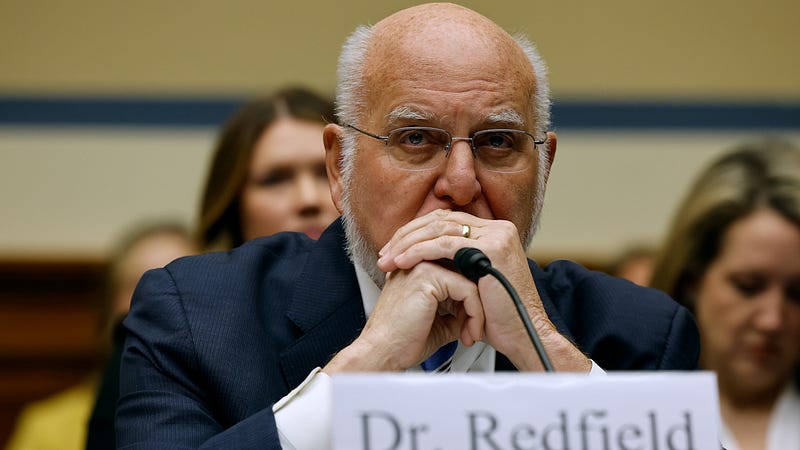
Fauci denied excluding Dr. Robert Redfield, the former CDC director, from critical discussions about the virus’s origins. However, Redfield testified otherwise, indicating a potential deliberate exclusion to control the narrative. This discrepancy suggests a possible attempt to limit divergent views and maintain a consistent, though potentially flawed, public message.
The exclusion of key figures like Dr. Redfield from critical discussions about the virus’s origins raises serious concerns about the decision-making process during the pandemic. Redfield’s exclusion from the February 1, 2020, conference call, where the potential lab origin of SARS-CoV-2 was discussed, suggests that alternative viewpoints and expertise may have been deliberately sidelined to control the narrative. Such actions undermine the collaborative and transparent approach needed in scientific and public health responses, where diverse perspectives are crucial for robust and credible decision-making.
The potential deliberate exclusion of Redfield, who has expressed support for the lab leak theory, indicates a concerning tendency to suppress dissenting views within the scientific community. This approach not only compromises the integrity of the scientific process but also erodes public trust in health authorities. Ensuring that all relevant experts are included in critical discussions, regardless of their views, is essential for fostering a transparent, inclusive, and scientifically sound approach to public health policy.
Private Email Usage
The use of private emails by senior advisors like Dr. Morens to avoid FOIA requests further complicates the narrative. Fauci’s claims of ignorance regarding these actions either indicate a lack of oversight or a deliberate effort to distance himself from unethical practices.
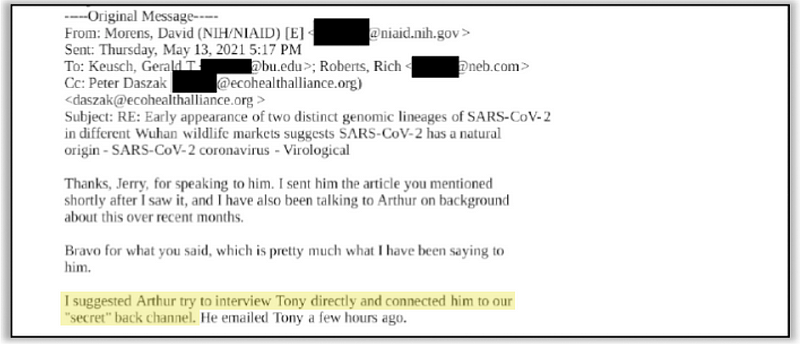
The use of private emails to conduct official business, particularly in the context of managing a global pandemic, represents a significant breach of transparency and accountability. Such practices undermine the principles of open government and hinder the ability of the public and oversight bodies to scrutinize the actions and decisions of public officials. In the case of Dr. Morens and his communications with Peter Daszak, the use of private emails to avoid FOIA requests suggests a deliberate effort to shield sensitive and potentially controversial information from public view.
Fauci’s claims of ignorance regarding Morens’ use of private emails raise further questions about his leadership and oversight. Whether this ignorance is genuine or an attempt to distance himself from unethical practices, it reflects poorly on the management and governance within NIAID. To restore public trust and ensure accountability, it is imperative to enforce strict adherence to transparency and record-keeping protocols, investigate any breaches thoroughly, and hold those responsible accountable for their actions.
Conclusion: The Need for Transparency and Accountability
The hearing exposed multiple instances of questionable actions, inconsistent statements, and weak defenses by Dr. Fauci. His repeated denials and lack of clear accountability on critical issues such as the lab leak theory, mask mandates, and vaccine mandates contributed to public mistrust. Ethical concerns and conflicts of interest involving senior advisors and funding practices further tarnished his credibility.
The overall lack of transparency and accountability in the COVID-19 response underscores the urgent need for significant reforms in public health strategies and oversight mechanisms. Moving forward, it is imperative that public health leaders adhere to the highest standards of scientific integrity and ethical conduct to restore public trust and effectively manage future health crises. The call for investigations and potential punitive measures against those who engaged in misconduct is not merely a pursuit of justice but a necessary step to ensure that such failures do not recur.
Restoring public trust requires a commitment to transparency, accountability, and ethical conduct at all levels of public health governance. Health authorities must prioritize clear and consistent communication, ensure robust oversight of research funding and compliance, and foster an inclusive decision-making process that values diverse perspectives. By addressing the shortcomings and ethical breaches revealed during the hearing, we can build a more resilient and trustworthy public health system capable of effectively responding to future pandemics and health challenges.
Moreover, it is essential to learn from the lessons of the COVID-19 pandemic to strengthen global health security and preparedness. This includes investing in early warning systems, improving international cooperation and information sharing, and ensuring that public health policies are based on the best available scientific evidence. By taking these steps, we can mitigate the impact of future health crises and protect the well-being of communities worldwide.
— — — — — — — — — — — — — — — — — — — — — — — — — — — — — — —
References:
On the Lab Leak Theory
1. **Emails and Communications**
— [Washington Post: “Top U.S. officials say lab leak theory of coronavirus origin needs to be investigated”](https://www.washingtonpost.com/health/2021/05/26/lab-leak-theory/)
— [CNN: “Emails show Fauci was warned that COVID-19 may have been ‘engineered’”](https://www.cnn.com/2021/06/01/politics/fauci-emails-covid-origins/index.html)
2. **Meta (Facebook) Communications**
— [Wall Street Journal: “Facebook bows to White House pressure on COVID misinformation”](https://www.wsj.com/articles/facebook-meta-whistleblower-covid-19-misinformation-11634325114)
3. **Proximal Origin Paper**
— [Nature Medicine: “The proximal origin of SARS-CoV-2”](https://www.nature.com/articles/s41591-020-0820-9)
— [US House Oversight: “Interim report on origins of COVID-19”](https://oversight.house.gov/report/interim-report-on-origins-of-covid-19/)
On Ethical Concerns and Conflicts of Interest
1. **Dr. David Morens’ Misconduct**
— [National Review: “Fauci’s adviser admits to using private email to avoid FOIA requests”](https://www.nationalreview.com/news/faucis-adviser-admits-to-using-private-email-to-avoid-foia-requests/)
2. **EcoHealth Alliance and Gain-of-Function Research**
— [Nature: “NIH admits US-funded research in Wuhan”](https://www.nature.com/articles/d41586-021-02801-0)
— [Science: “Controversial Wuhan research”](https://www.sciencemag.org/news/2021/05/nih-veteran-peter-daszak-defends-research-collaboration-wuhan-institute-virology)
On Mask Mandates and Social Distancing
1. **The Six-Foot Rule**
— [New York Times: “The Origins of the 6-Foot Social Distancing Rule”](https://www.nytimes.com/2020/04/15/health/coronavirus-six-feet.html)
2. **Inconsistent Messaging on Masks**
— [CNN: “Fauci emails reveal flip-flop on masks”](https://www.cnn.com/2021/06/02/politics/fauci-emails-masks/index.html)
On Vaccine Mandates
1. **Decision-Making Process**
— [Washington Post: “The inside story of how Trump’s denial, mismanagement and magical thinking led to the pandemic’s dark winter”](https://www.washingtonpost.com/graphics/2020/politics/trump-covid-pandemic-dark-winter/)
2. **Addressing Vaccine Hesitancy**
— [Nature: “Overcoming vaccine hesitancy for COVID-19”](https://www.nature.com/articles/s41577-021-00550-x)
— [Annals of Internal Medicine: “Study on vaccine hesitancy”](https://www.acpjournals.org/doi/10.7326/M20-7357)
Additional Relevant Studies and Articles
1. **Lockdowns**
— [Johns Hopkins University Meta-Analysis: “A Literature Review and Meta-Analysis of the Effects of Lockdowns on COVID-19 Mortality”](https://sites.krieger.jhu.edu/iae/files/2022/01/A-Literature-Review-and-Meta-Analysis-of-the-Effects-of-Lockdowns-on-COVID-19-Mortality.pdf)
— [The Lancet: “Effectiveness of lockdowns”](https://www.thelancet.com/journals/lancet/article/PIIS0140-6736(21)02777-3/fulltext)
— [Nature: “Impact of lockdowns on COVID-19”](https://www.nature.com/articles/d41586-021-00084-3)
2. **Mask Effectiveness**
— [BMJ Open: “Efficacy of cloth masks”](https://bmjopen.bmj.com/content/5/4/e006577)
— [Annals of Internal Medicine: “Danish mask study”](https://www.acpjournals.org/doi/10.7326/M20-6817)
— [Cochrane Review: “Review on mask efficacy”](https://www.cochranelibrary.com/cdsr/doi/10.1002/14651858.CD006207.pub5/full)

